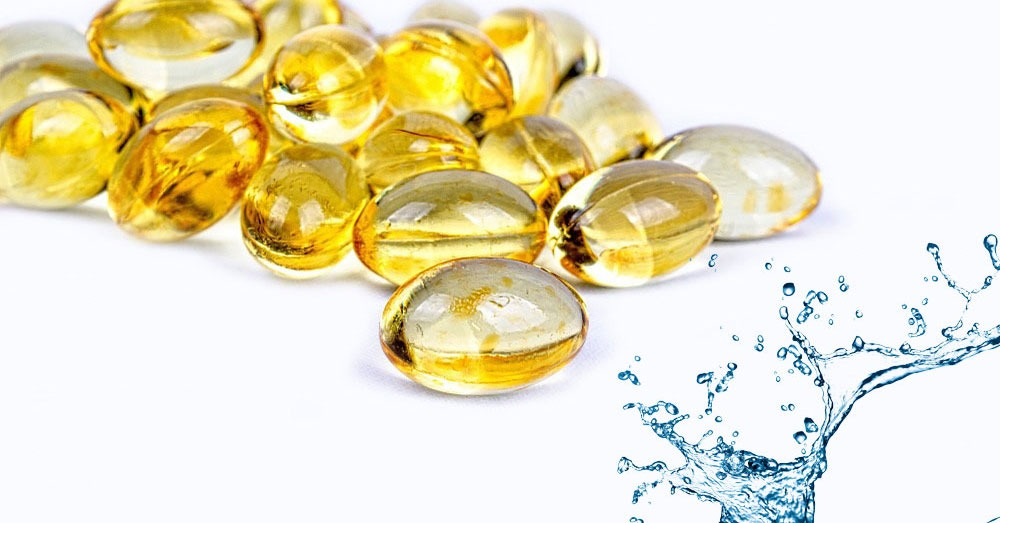Water-Soluble CBD: All You Need to Know
December 24, 2020 at 1:52 pm,
No comments
Water-soluble CBD is perhaps the most recent advancement in the CBD world. On the off chance that you've been giving close consideration, odds are that you have seen increasingly more water-soluble CBD items flooding the market recently. However, with oil and water not having the option to blend, how is water-soluble CBD made conceivable? What's more, does water-soluble CBD have any points of interest contrasted with CBD oil? To find solutions to these and different inquiries, we chose to ask the specialists. 

NanocraftCBD is an organization that spends significant time in nanotechnology-based CBD items. Their items are generally outsider tried and their hemp-inferred CBD is non-GMO and contains no pesticides, solvents, herbicides, or synthetic composts. This is what NanocraftCBD needed to state about water-soluble CBD.
What is water-soluble CBD?
To begin, how about we talk cannabis. The cannabis plant can be utilized as an umbrella term to incorporate cbd and hemp plants, henceforth, why you may hear these terms utilized conversely. The pot plant contains tetrahydrocannabinol (THC) and cannabidiol (CBD), among other cannabinoids, flavonoids, and terpenes. The hemp plant may likewise contain the mixes recorded above, yet contains almost no THC.
Besides, cannabinoids, including tetrahydrocannabinol (THC) and cannabidiol (CBD), are hydrophobic, slick creatures—which means, they aren't really effectively "blendable" with water. Making CBD water-soluble can be depicted as the way toward fusing cannabinoids into water by first isolating them into little particles, explicitly particles or atoms.
How is water-soluble CBD made?
Water soluble cbd capsules is made utilizing nanotechnology, the science and designing associated with the union, plan, portrayal, and use of materials in their littlest useful association on the nanometer scale. In layman's terms, nanotechnology utilizes soundwaves to separate cannabidiol bunches into tiny measured particles—more modest than 100 nanometers.
All together for oils (counting THC and CBD) to get mixable in water, they should be planned as nanoemulsions or microemulsions utilizing a fluid suspension cycle to secure and convey bio-dynamic parts. This fluid suspension cycle can be logically depicted as colloidal scatterings. This cycle suspends little particles and conveys them inside a fluid.
Miniature and nanoemulsions can be set up in concentrated structures that are completely equipped for blending in with water, hence, showing up water-soluble. Note that emulsions require the utilization of surfactants, which weaken the items. There are normal surfactant choices accessible, with negligible antagonistic negative impacts. Nonetheless, it is gainful to utilize the littlest measure of surfactant as could be expected under the circumstances.
When separated into these minuscule particles, CBD gets H2O-viable, being adequately little to break up, mixing consistently with the H2O atoms. Blast – emulsion! These nanoemulsions and microemulsions are outwardly homogeneous oil/water combinations, from an overall perspective. They are outwardly the "same" combinations, however extraordinary inside the blends.
Are there any drawbacks to water-soluble CBD?
Potentially! It can rely upon the shopper and what sort of CBD item they are searching for. In the event that a client needs to receive the rewards of a full-range oil, with one of a kind terpenes, flavonoids, and basic oils, water-soluble CBD may not be the best fit. In any case, in case you're not enthusiastic about the CBD color oil taste and are searching for an item with 0.00% THC, water-soluble items might be your go-to!
Commonly, water-soluble CBD just contains CBD.
One downside to this type of CBD is that you may simply be getting CBD seclude, which is the solidified, most flawless type of CBD. Which sounds incredible, yet a few customers may likewise need CBD with other cannabinoids present. Hence, this water-soluble structure might not have the entirety of the cannabis benefits that the plant has to bring to the table.
For a few, this might be something incredible! Be that as it may, different purchasers may need follow measures of THC present to feel a novel mix of unwinding and rapture. For example, a few purchasers may incline toward a full-range cannabidiol due to the novel mix of terpenes, flavonoids, cannabinoids, and up to 0.3% THC.
Water-soluble CBD may not remain in your framework as long.
In view of the manner in which oils and fats are utilized in our framework, expansive and full-range oils regularly remain longer in our framework. This permits them to have a more drawn out enduring impact contrasted with water-soluble CBD which can be discharged when you pee.